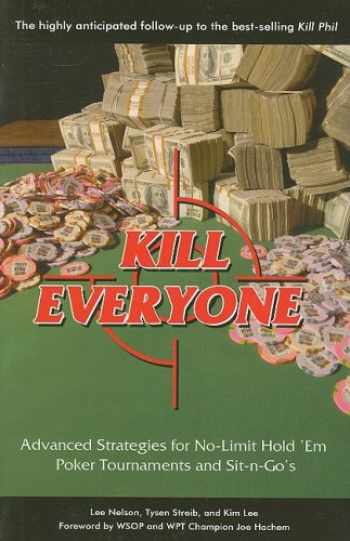No Limit Holdem Tournament Strategy
(This article is a follow up to 'Bubble Tournament Strategy')
People love to play no-limit Hold ’em poker tournaments these days. That translates to big fields in online tournaments – especially freerolls and low buy-in events. Many sites now sponsor a weekly large guaranteed prize pool event, usually in the neighborhood of $100,000-$1,000,000. Late Stages Strategy for Poker Tournaments (This article is a follow up to ' Bubble Tournament Strategy ' ) The late stages of a tournament begins when the money bubble bursts, and ends when players reach the final table (or final few tables, if it is a really large tournament). Harrington on Hold 'em Expert Strategy for No Limit Tournaments, Vol. 1: Strategic Play - Kindle edition by Harrington, Daniel, Robertie, Bil. Download it once and read it on your Kindle device, PC, phones or tablets. Use features like bookmarks, note taking and highlighting while reading Harrington on Hold 'em Expert Strategy for No Limit Tournaments, Vol.
The late stages of a tournament begins when the money bubble bursts, and ends when players reach the final table (or final few tables, if it is a really large tournament). Your play during this stage of the tournament should change drastically, as you have now made the money and have the opportunity to climb in the payouts.
During the late stages, blinds will be placing immense pressure on almost everyone's stack, save for the chip leader. Once again, the most important factor in determining your correct style of play is your stack size, so we have written guides for playing the late stages with a short stack, an average stack, and a large stack.
You can finally see the finish line, so make sure to follow the strategies below to reach the final table and win a huge pay day:
Playing the Short Stack in the Late Stages
At this stage in the game the short stack is actually the simplest stack to play, because you only have two moves: all-in or fold. A short stack is any stack that only has ten or less big blinds. You can only last one or two rounds without making a play, so you need to be on the lookout for opportunities every single hand.
Although you only have two plays, you can use them in strategic ways to build your chip stack. When you are in late position, you should be pushing all-in whenever the table folds to you in order to steal the blinds. Also, if a couple players limp in you can try a squeeze play by raising all-in with the hopes that everyone folds. And it goes without saying that you are pushing all-in with any pocket pair or any two face cards, regardless of position.
If you are in the small blind and everyone folds to you, you should be going all-in the majority of the time because the big blind is very likely to fold. By stealing in late position, occasionally squeezing, and stealing from the small blind, you can pad your stack and build back up to an average-sized stack.

No Limit Holdem Tournament Strategy
Playing the Average Stack in the Late Stages
Playing an average stack during the late stages of a tournament is a lot more difficult than playing an average stack at the start of a tournament, because the enormous blinds and antes will place far more pressure on your stack. Players with an average stack can steal, re-steal, and squeeze, but should avoid going all-in from the small blind, as you don't need to do that yet. In addition, average stacks should look to get all-in preflop in favorable situations.
Nl Holdem Tournament Strategy
Playing coin flips against smaller stacks is a good opportunity to build your stack. Short stacks will push all-in with marginal hands, so you can make calls with a wide variety of hands and still be ahead. If a short stack pushes all in, feel free to call them down with any pocket pair, or any two big cards. You will almost always either be ahead or be in a coin flip situation, so it is a profitable move overall.
Playing the Big Stack in the Late Stages

Big stacks should follow a similar strategy to the middle stacks during the late stages: steal from late position, re-steal occasionally, squeeze when it is appropriate, and call all-ins when you think you are ahead. However, with a big chip stack you can do all of those things, but more aggressively.
Depending on how badly you need a big pay day, you can vary your aggression. If you want to go for the win and can afford to place outside of the final table, go with a super aggressive approach and try to become the overall chip leader of the tournament. If you really need a final table finish and don't want to take a risk, you can take a more passive approach that will guarantee you a nice score.
Regardless of your approach, you should never be limping in as the big stack - either fold or raise. If you are going to call another player's all-in, make sure that you can comfortably afford to lose the hand. If the other player has big chip stack you better have a solid hand, because you are basically gambling with your tournament life.

Now that you know how to play the late stages, learn how to play the final table.